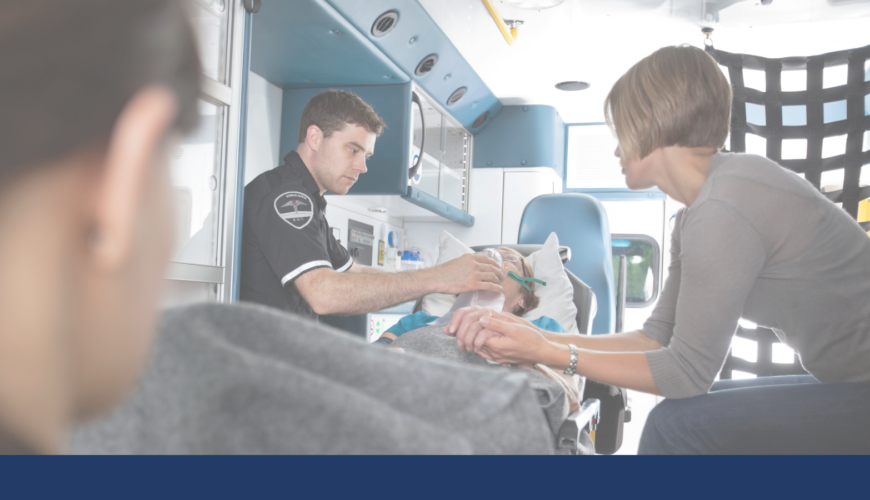“Compassion fatigue” is a term that may be unfamiliar to some, but is rapidly becoming a recognized issue in our society. One day, fire culture may see compassion fatigue listed and treated as a mental hazard along with Post Traumatic Stress Disorder. Indeed, the two are often parallel . But what is compassion fatigue?
One of the pioneers of our understanding of compassion fatigue was Dr. Charles Figley, who defined it as follows:
“Compassion Fatigue is a state experienced by those helping people or animals in distress; it is an extreme state of tension and preoccupation with the suffering of those being helped to the degree that it can create a secondary traumatic stress for the helper.”
Compassion fatigue is not a mental illness, but it is a disorder – similar to other mental or emotional disorders like major depression, bipolar disorder, or alcoholism. Studies suggest that it is highly prevalent among nurses, hospice workers, doctors and animal shelter workers. But what about first responders? Who is more compassionate than those who rush into the burning house, or pump vital oxygen into the lungs of the dying? If you are a first responder, you are likely already at risk for developing compassion fatigue.
Dr. Charles Figley, who coined the term “compassion fatigue”, served in Vietnam as a Corporal in the Marine Corps. He consistently volunteered his time to helping communities affected by the conflict. After leaving the service, he began treating other veterans who were suffering from post-traumatic stress. At the time, PTSD was not as well understood as it is now, but Dr. Figley noticed recurring sets of symptoms and characteristics in certain patients. He noticed that certain symptoms were displayed by people who often shared a similar set of characteristics. For example, many of them came from circumstances in which they were the primary caregiver for infirm or juvenile relatives. He labelled this set of symptoms and characteristics “compassion fatigue”.
Compassion fatigue is categorized as a secondary stress disorder, as opposed to PTSD, which is a direct stress disorder. With PTSD, the sufferer has witnessed or suffered something terrible. But with secondary stress disorders, the sufferer instead identifies with the trauma of another. Compassion fatigue is characterized by caring too much, for too long. When we place the needs of others above our own, we often neglect to care for ourselves adequately. Compassion is a noble virtue. But, if we are to function at the highest levels of performance when helping others, we must make sure our own “engine” is finely tuned. Compassion fatigue has very real effects. Be aware, and take warning if you notice these in yourself or a colleague.
- The sufferer will attempt to insulate themselves from harm or further demands for aid by withdrawing from others.
- Emotional outburst. The sufferer has insufficient coping mechanisms for the stress they are experiencing, and react explosively or implosively.
- Physical unwellness. This can manifest as any number of stress-related chronic ailments, including headaches, back/shoulder pain, nausea and dizziness, or inability to shake a cold.
- Substance abuse. This is one of the most common. You will notice the sufferer increasingly turning to self-medication in order to cope with their constant emotional stress. In fire culture, this is most often alcohol, although prescription drugs are also dangerously prevalent.
- Sadness & apathy. This is another extremely common reaction. You may notice a coworker becoming increasingly callous, even flippant when it comes to negative outcomes. “Well, we couldn’t have saved them anyway.” “What difference does it make? We’re screwed, either way”. Alternatively, the sufferer can become crushed and despondent, feeling despair at their lack of ability to save everyone.
- Flashbacks, recurring nightmares. This is a strong indicator for comorbidity with PTSD, and will likely require the intervention of a mental health professional.
It may be unsurprising to learn that first responders are at greater risk of developing these symptoms. In some ways, the fire and medic communities are not so different than the nursing community and other caregivers. Often, first responders are the first ones on-scene, delivering much-needed care to those frightened, displaced and injured. It’s no surprise, then, that first responders are disproportionately empathetic compared to the general populace. Those who are most compassionate are most at risk of developing compassion fatigue. Indicators for a personality which may be more likely to develop the disorder:
- Other-directedness. That is, the individual derives a significant portion of their sense of self from the ideas of others, or is otherwise focused on conforming to the expectations of others. This is hugely prevalent in the hierarchical, fraternal nature of most public safety, where a word from an experienced mentor can make or break a young first responder.
- Lack of strong personal boundaries. The individual is ready to give anything from themselves to others, and may have difficulty saying “no”.
- Unresolved past pain and trauma. Many first responders – due to our macho and stoic culture – carry around a great deal of unresolved trauma. This can be from either the job, or from painful events in one’s personal life – both are extremely common.
- Over-developed sense of responsibility.
- Impulse to rescue anyone in need.
Does this sound like it describes any first responders you know?
Does it describe you?
If so, you or that individual are not alone. Effective coping mechanisms can learned. The question we raised earlier was, “Who will help the helpers?” Compassion fatigue activist Patricia Smith put it best when she said, “Healing occurs from the inside, outwards.” Essentially, the sufferer must learn to care for themselves. Self-care begins with awareness. You must first recognize your own feelings, and recognize them as valid. Only then can the task of processing them begin. You must take time, every day, to rebuild and refill yourself with the things that are authentically meaningful for you.
MdE has worked with First Responders for over 20 years. We provide software and services for tracking training and performance which can aid in early intervention. If you or someone you know is interested in more information, contact us at MdE@MdE-Inc.com or call 877-500-5396.
Works Cited
Smith, Patricia. “How to Manage Compassion Fatigue in Caregiving.” TEDxSanJuanIsland. Washington, Friday Harbor. 14 Mar. 2017. Lecture.
“What is Compassion Fatigue?” Compassion Fatigue Awareness Project. Compassion Fatigue Awareness Project, n.d. Web. 14 Mar. 2017. a href=”http://www.compassionfatigue.org/pages/compassionfatigue.html”>http://www.compassionfatigue.org/pages/compassionfatigue.html


